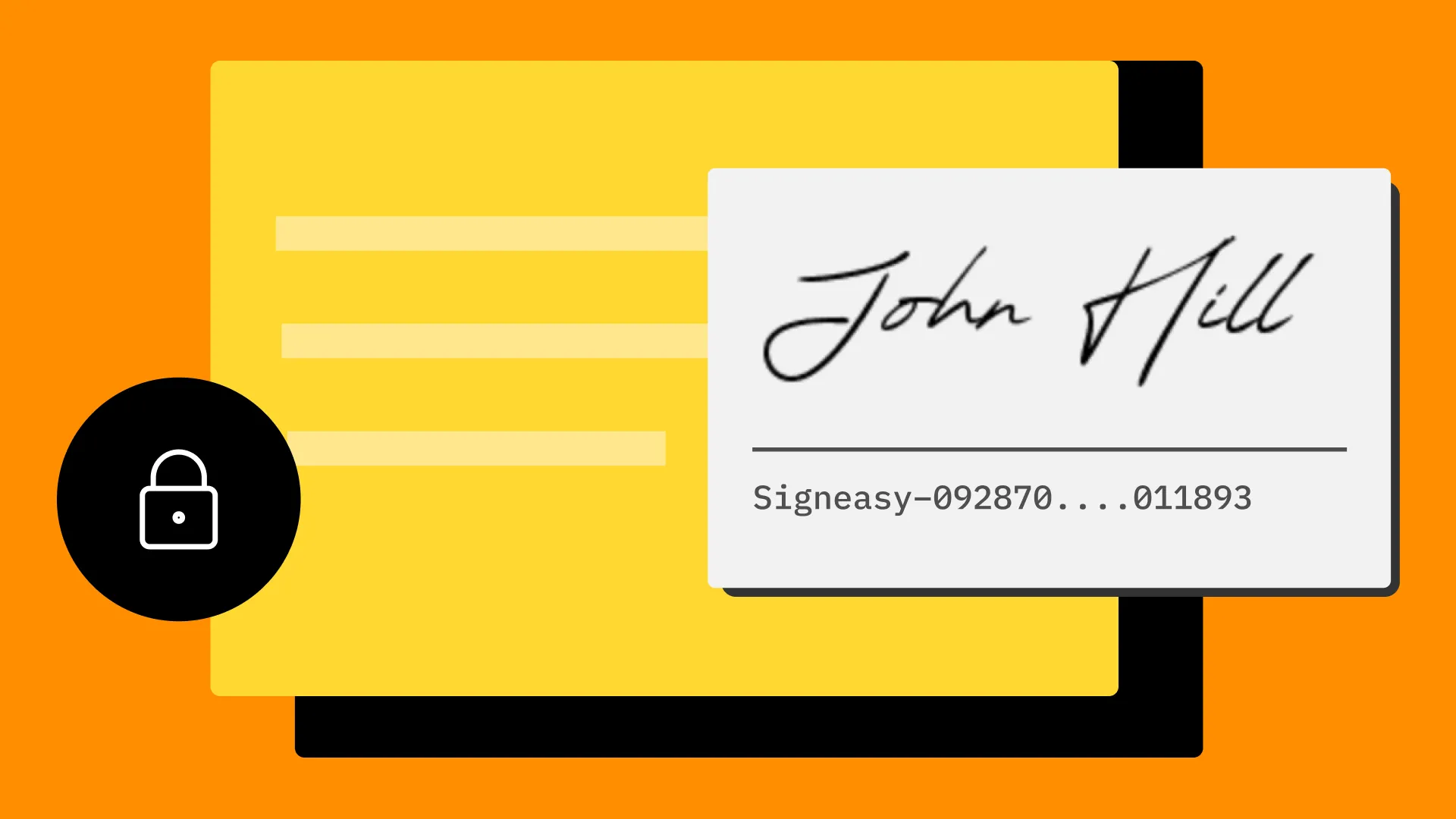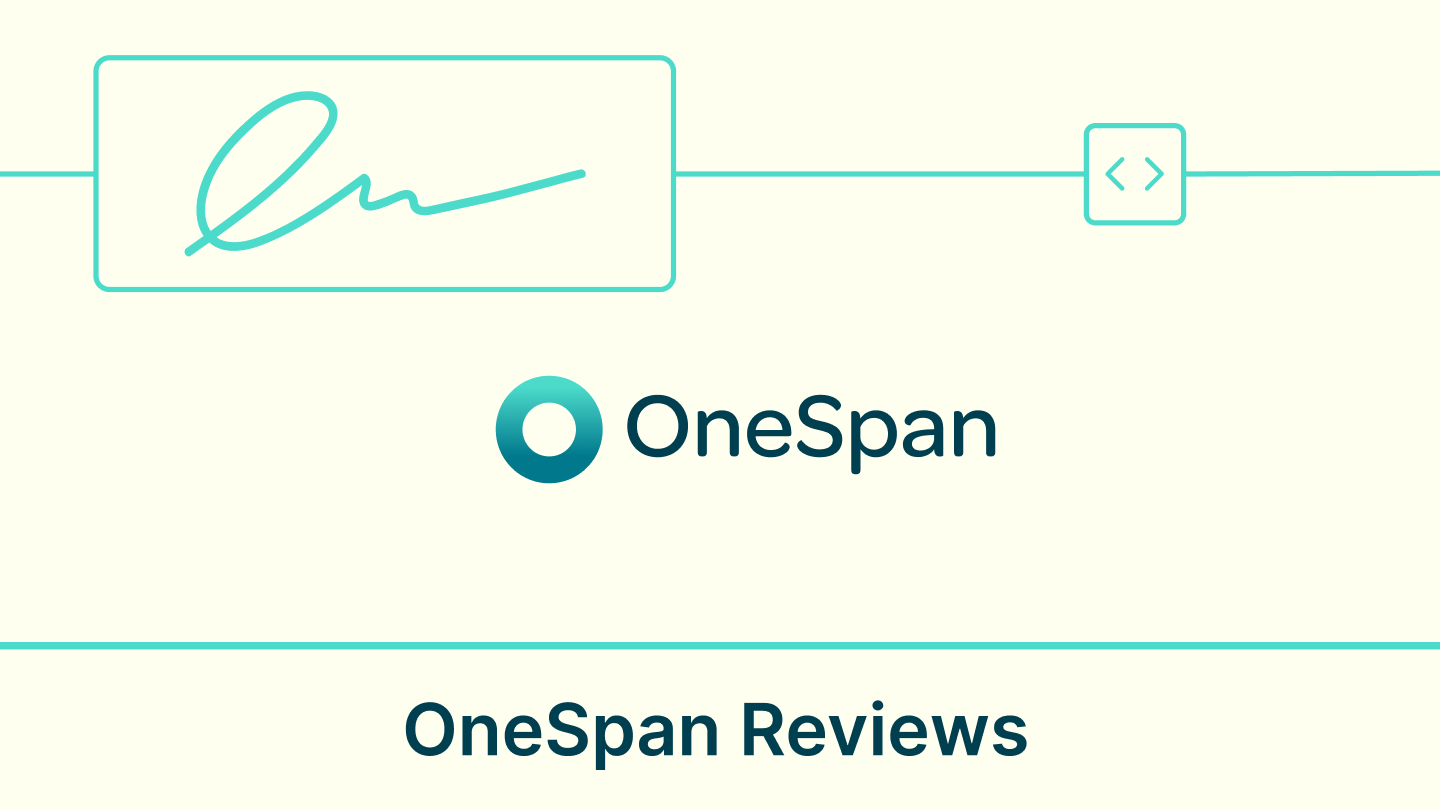What is an electronic seal?
An electronic seal, often called an “eSeal” is a digital equivalent of a traditional physical seal or stamp used to authenticate and secure electronic documents or data. Electronic seals are primarily used in digital or electronic transactions to ensure the integrity and authenticity of the documents, much like how physical seals or signatures are used in the paper-based world.
A digital seal is a specific type of electronic seal that is used to authenticate and secure electronic documents or data through the application of cryptographic techniques. It involves using digital signatures to ensure the authenticity and integrity of digital content.
While both electronic seals and digital seals are used for document authentication, the key distinction lies in the level of security and formality they offer. Electronic seals are more versatile but less secure, whereas digital seals provide a high level of security and are typically used for formal, legally binding documents and transactions.
Evolution from traditional seals
Since the beginning of recorded history till date, we have had a wide range of seal practices. Among these, wax and rubber seals have been a popular choice.
It was governments and royalties who started employing distinct designs to ensure the security of their transactions and maintain confidentiality.
However, these historically significant traditional seals come with several drawbacks. The wax seals are susceptible to cracking and chipping. Environmental factors like temperature and humidity would distort the seal impression, making them less durable and practical. This affects the security of the document.
In response to these challenges and in light of digital advancements, digital evolution gave a new face to sealing practices. Now the documents are sealed online.
How electronic seals work
Electronic seals apply digital or electronic marks to documents or data to confirm their authenticity and integrity. The exact process can vary depending on the technology and methods used, but here’s a general overview of how electronic seals typically work:
- Document preparation: The process begins with the creation or preparation of the electronic document that needs to be sealed. This document can be in various formats, such as PDF, Word, or other electronic data.
- Seal application: The entity or individual responsible for sealing the document uses specific software or tools designed for electronic sealing. The seal can take different forms, such as a visual image, a digital signature, or a watermark, depending on the chosen method.
- Authentication: If the electronic seal involves cryptographic methods, a private key is used to create a unique digital signature for the document. This signature is generated based on the document’s content and other parameters, and it confirms the authenticity of the document.
- Timestamp: In some cases, a timestamp is applied to record the date and time of the sealing. This helps establish when the document was sealed and can prevent backdating.
- Distribution: The sealed document is then distributed to the intended recipients, who may need to verify the seal’s authenticity. For added convenience, some organizations also allow users to sign PDF online before applying the electronic seal, streamlining the process for digital document management.
- Verification: Recipients use the corresponding public key or other verification methods to check the document’s seal. If the seal is valid, it indicates that the document has not been tampered with and that it comes from a legitimate source.
- Record Keeping: Many organizations maintain records of sealed documents and their associated seals for auditing and legal purposes.
Digital Signatures vs. Electronic Seals
Digital Signatures and Electronic Seals are both methods for ensuring the authenticity and integrity of electronic documents, but they serve different purposes and have distinct characteristics:
Components of an electronic seal
Electronic seals consist of several key components that work together to create a secure and verifiable digital seal for electronic documents or data. These components typically include:
1. Digital signature
This is a cryptographic technique that creates a unique and tamper-evident signature for the document. It is generated using a private key and can be verified using a corresponding public key. The digital signature ensures the authenticity and integrity of the document.
2. Private key
The private key is a secret cryptographic key held by the entity or individual applying the electronic seal. It is used to create the digital signature and should be securely stored and protected to prevent unauthorized access.
3. Public key
The public key is made available to those who need to verify the electronic seal. It is used to confirm the authenticity of the digital signature. Unlike the private key, the public key is not kept secret and can be freely distributed.
4. Certificate authority (CA)
A certificate authority is a trusted third-party organization that issues digital certificates. These certificates bind a public key to the identity of the entity or individual holding the private key. The CA’s role is to vouch for the authenticity of the public key and the associated electronic seal.
5. Hashing algorithm
A hashing algorithm creates a fixed-size, unique representation (hash) of the document’s content. This hash is included in the digital signature and is used to verify the document’s integrity. Any change to the document will result in a different hash.
6. Seal image or symbol
In some cases, an electronic seal may include a visual representation of the seal, such as a digital image or symbol, which can be added to the document to indicate its authenticity and to replicate the traditional concept of a physical seal.
7. Timestamp
A timestamp is often included to record the date and time when the electronic seal was applied to the document. This provides additional evidence of when the document was sealed and helps prevent backdating.
8. Authentication and verification software
To apply electronic seals and verify their authenticity, specialized software is used. This software typically handles the cryptographic operations, key management, and digital signature generation and verification.
Legal validity and compliance of electronic seal
Electronic seal regulations and their recognition in court are subject to the laws and regulations of the specific region or country. Here’s a general overview:
eSignature regulations
US ESIGN Act and the European eIDAS Regulation, generally provide a legal framework for using electronic signatures and seals. However, the recognition and acceptance of electronic seals can depend on several factors, including the level of security and authentication they offer. If electronic seals meet the regulatory requirements for electronic signatures and are considered secure and tamper-evident, they are more likely to be legally valid and compliant.
Admissibility in court
The admissibility of electronic seals in court depends on the legal system of the jurisdiction and the specific rules regarding evidence and document authenticity. In many countries, electronic seals can be admitted as evidence in court proceedings if they meet certain criteria:
- Compliance with eSignature regulations: Seals that comply with relevant eSignature regulations and standards are more likely to be accepted in court.
- Security and integrity: The court will want assurance that the electronic seal provides a high level of security and ensures the integrity of the document. This may involve the use of digital signatures and strong authentication methods.
- Chain of custody: Maintaining a clear and documented chain of custody for the electronically sealed document can also enhance its admissibility in court.
- Expert testimony: In some cases, expert testimony or the testimony of a qualified witness may be required to explain the authenticity and security of the electronic seal.
Benefits of electronic seals
Some of the key advantages include the following:
- Enhanced security: Electronic seals use cryptographic methods to provide a high level of security, making it difficult for unauthorized parties to tamper with or forge electronically sealed documents.
- Authenticity: They confirm the authenticity of documents, assuring recipients that the document originated from a legitimate source and has not been altered.
- Data integrity: Electronic seals help maintain the integrity of documents, as any modifications to the content would render the seal invalid, providing tamper-evident protection.
- Efficiency: Electronic seals streamline document handling and authentication processes, reducing the need for physical paperwork and manual verification.
- Cost savings: The transition to electronic seals can lead to cost savings by eliminating the expenses associated with physical stamps, printing, and postage.
- Remote collaboration: Electronic seals facilitate remote and digital collaboration, enabling the signing and sealing of documents from different locations.
- Environmental impact: By reducing the need for paper-based documentation, electronic seals contribute to sustainability efforts by lowering paper consumption and waste.
- Faster transactions: Electronic seals expedite transactions and approval processes, reducing turnaround times and enhancing overall business efficiency.
- Digital records management: Electronic seals contribute to the transition to digital record-keeping, making it easier to manage, search, and retrieve documents.
Use cases and applications
Electronic seals have many use cases and applications across various industries and sectors. Some of the common use cases and applications of electronic seals include:
1. Legal documents
Electronic seals are used to authenticate contracts, agreements, and legal documents, making them legally binding and secure. This is common in legal firms, courts, and government agencies. Examples: Contracts, court orders, wills, affidavits, legal agreements, and power of attorney documents.
2. Business contracts
Organizations use electronic seals to seal business contracts, purchase agreements, and other important business documents, expediting the signing and approval process. Examples: Sales contracts, partnership agreements, non-disclosure agreements (NDAs), and vendor agreements.
3. Financial transactions
Electronic seals are crucial in the financial industry for securing loan agreements, financial statements, and banking documents. Examples: Loan agreements, mortgage documents, investment contracts, and financial statements.
4. Healthcare records
Electronic seals are used to secure and authenticate electronic health records (EHRs) to ensure patient data confidentiality and integrity. Examples: Electronic health records (EHRs), patient consent forms, medical reports, and insurance claims.
5. Government documents
Government agencies use electronic seals for various documents, including permits, licenses, and official reports, to enhance security and reduce paperwork. Examples: Licenses, permits, tax returns, and official reports.
6. Notary services
Electronic notaries use electronic seals to verify the authenticity of documents and provide digital notary services, saving time and reducing costs. Examples: Notarized affidavits, wills, deeds, and legal documents requiring notarization.
7. Real estate transactions
Real estate agencies and property management companies apply electronic seals to contracts, deeds, and property records to streamline the buying and selling of real estate. Examples: Property deeds, sales contracts, lease agreements, and title documents.
8. Educational records
Schools, colleges, and universities use electronic seals to authenticate diplomas, certificates, and academic transcripts. Examples: Diplomas, certificates, academic transcripts, and educational accreditation records.
9. Supply chain and logistics
Electronic seals are applied to shipping and cargo documents to ensure the integrity and security of shipping records and to track the movement of goods. Examples: Bills of lading, cargo manifests, shipping invoices, and customs documents.
10. Intellectual property
Organizations use electronic seals to protect intellectual property rights by sealing patent applications, copyrights, and trademarks. Examples: Patent applications, copyright registrations, trademark certificates, and licensing agreements.
11. Quality assurance
Manufacturers use electronic seals to authenticate quality control documents and certifications, ensuring the quality and safety of products. Examples: Quality control certificates, product inspection reports, and ISO compliance documents.
12. Human Resources
HR departments use electronic seals to secure employment contracts, employee records, and HR-related documents. Examples: Employment contracts, employee confidentiality agreements, and HR policy documents.
Types of electronic seals
Electronic seals come in various types, each designed to serve specific purposes and meet different security and authentication requirements. Here are some common types of electronic seals:
1. Qualified electronic seals
Recognized by eIDAS Regulation, Qualified E-seal (QEseal) is an electronic seal that holds a high level of recognition and security. A qualified seal creation device, QSeal CD, is used to create a QESeal. It boosts the protection and level of assurance in the seal creation process.
2. Advanced electronic seals
Advanced E-seal does not provide the highest level of security as QEseal, but ensures a substantial level of integrity of the document’s content. It can easily detect any unusual changes made.
Unlike qualified E-seal, it doesn’t require a social device for creation; it can be easily created using various electronic seal creation methods.
Implementing electronic seals
Implementing electronic seals involves several key steps:
- Define purpose: Identify the intended use and scope for electronic seals in your organization.
- Select technology: Choose the appropriate technology and tools, considering legal and regulatory compliance.
- Compliance assessment: Understand the relevant legal and industry regulations governing electronic seals.
- Key pair generation: Create a pair of cryptographic keys: a private key for sealing and a public key for verification.
- User authentication: Implement strong user authentication and access controls for seal application.
- Document preparation: Ensure documents are in the right electronic format for sealing.
- Seal application: Apply electronic seals, be they visual, digital signatures, or other authentication methods.
- Record keeping: Maintain comprehensive records and audit trails of sealed documents.
- Distribution: Share sealed documents with recipients or securely store them as needed.
- Integration: Integrate electronic seals into your document management systems for seamless handling, retrieval, and maintenance of sealed documents.
- Verification process: Educate users on how to verify sealed documents using public keys or other verification methods.
- Testing and training: Test and train users on proper seal application and verification.
- Document lifecycle management: Establish procedures for document archiving, retrieval, and disposal.
- Continuous monitoring: Regularly monitor document security and integrity, and update practices as needed.
- Legal considerations: Consult with legal experts to ensure compliance with e-signature regulations.
- Data backup and recovery: Implement data backup and recovery to safeguard sealed documents.
- Regular audits: Conduct periodic audits to verify compliance and security.
Choosing an electronic sealing solution
You need to be very careful while choosing an E-sealing solution for your organization to ensure the safety and protection of documents. There are various factors you need to be vigilant about for your organization.
- Needs assessment: Identify your organization's specific document sealing requirements.
- Regulatory compliance: Understand relevant legal and industry regulations.
- Security level: Determine the required security and authentication for sealed documents.
- Seal type: Choose the appropriate type of electronic seal (e.g., visual, digital signature).
- Ease of use: Ensure user-friendliness for easy application and verification.
- Interoperability: Check if it integrates with existing systems and workflows.
- Scalability: Confirm its ability to grow with your organization.
- Cost consideration: Evaluate total cost and budget alignment.
- Vendor reputation: Research the vendor's track record and reputation.
- Testing and selection: Conduct trials and make the final selection based on alignment with your requirements, security standards, and budget.
Conclusion
Electronic seals have emerged as a powerful tool in the world of digital document security and authenticity. Their legal recognition in most countries has promoted efficiency by eliminating the need for physical paperwork. Thus reducing delays and administrative costs. Electronic seals achieve this by integrating digital certificates, encrypted hash values, and timestamps.
In today's digital landscape, electronic seals have become an essential tool for secure document management. They provide an efficient and legally recognized way to verify and safeguard crucial documents, whether you're a legal professional, a business owner, or an individual looking to enhance the security of your digital transactions.
When it comes to electronic signatures, Signeasy's eSignatures is a trusted and user-friendly solution that simplifies the process of online document signature, ensuring the security, reliability, and legal validity of your digital paperwork. Make the switch to electronic signatures today, and experience the convenience and efficiency of digital document management for yourself!











